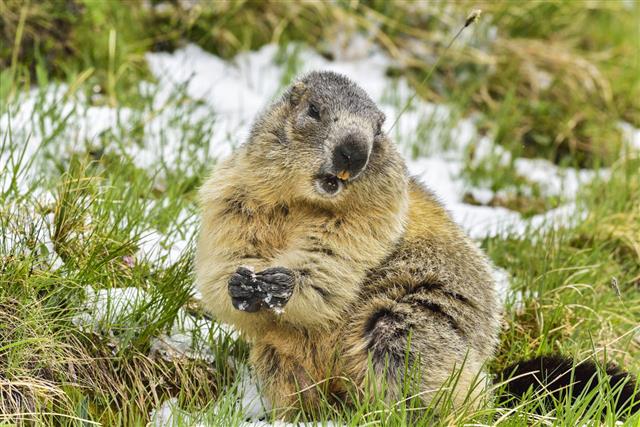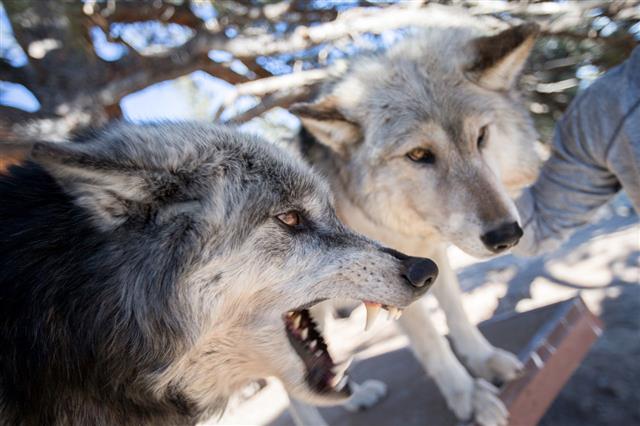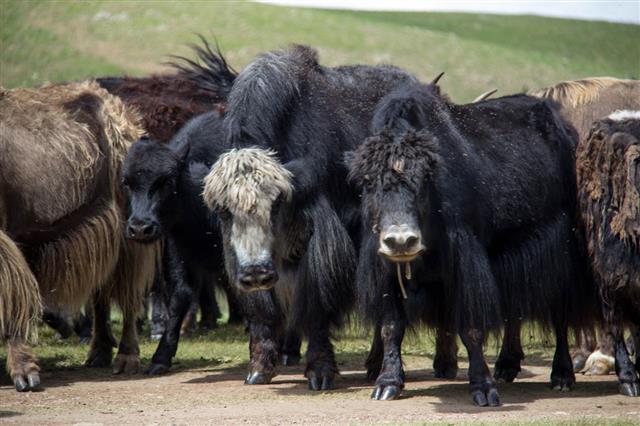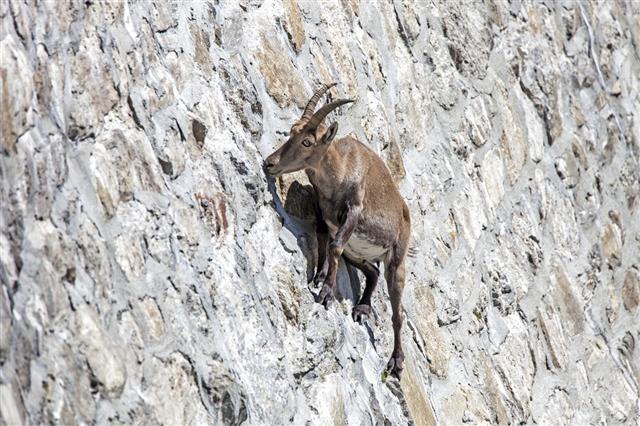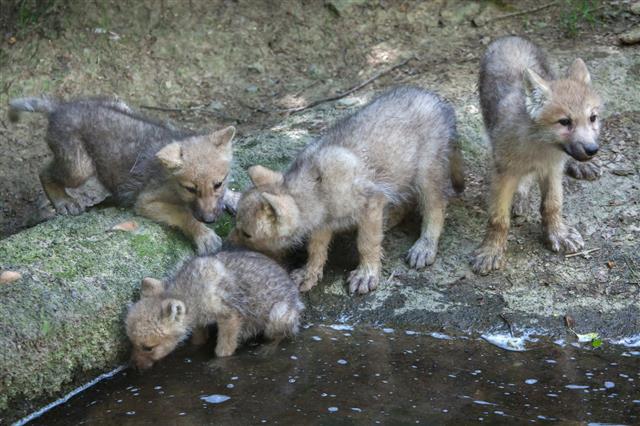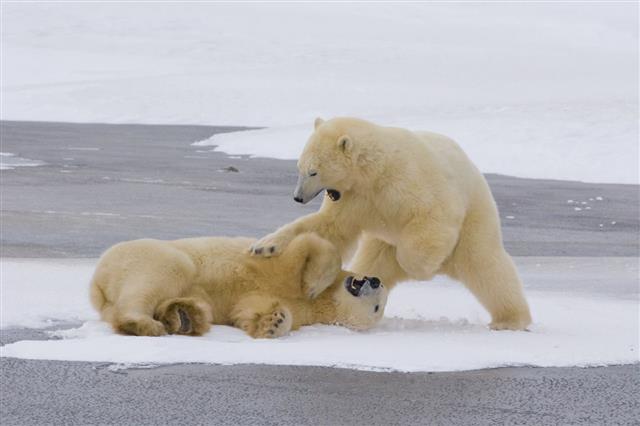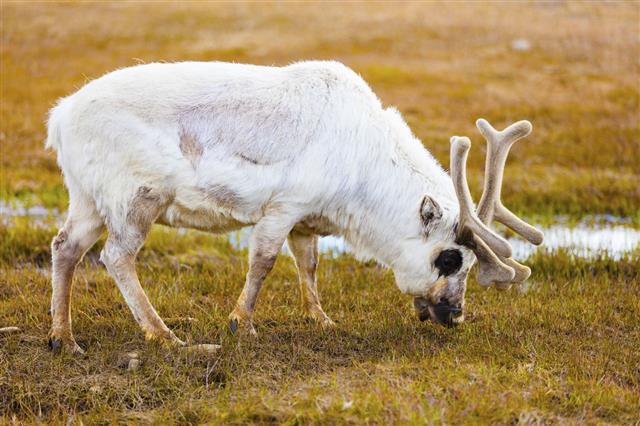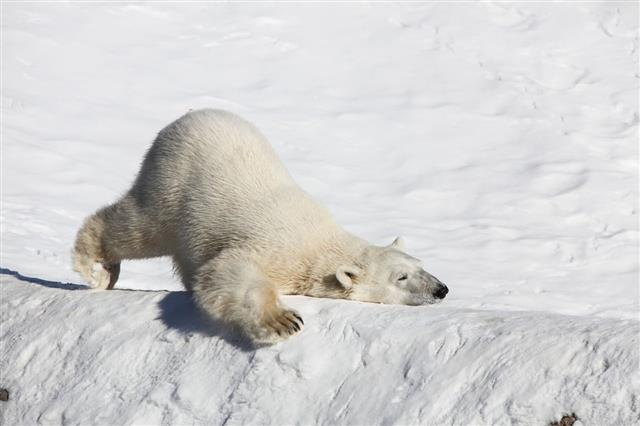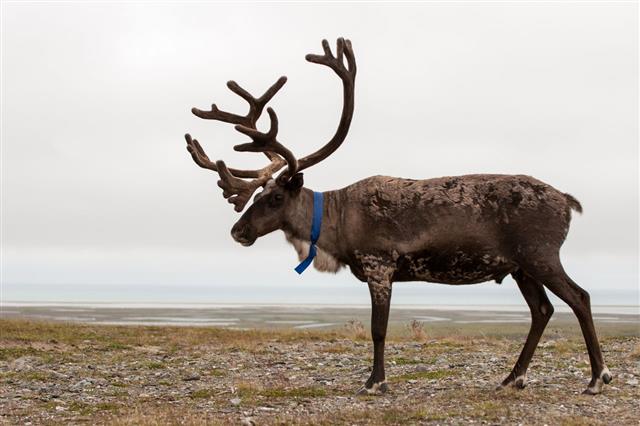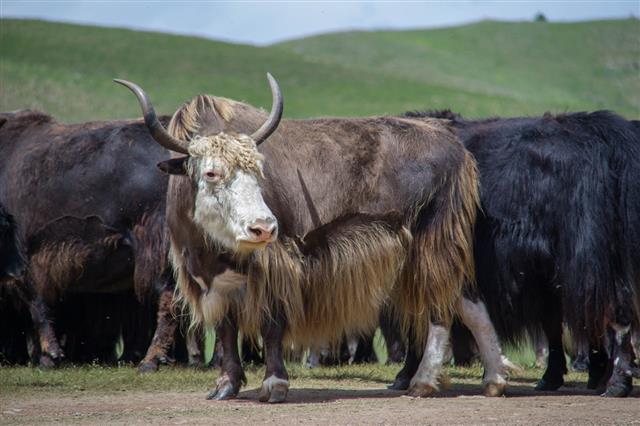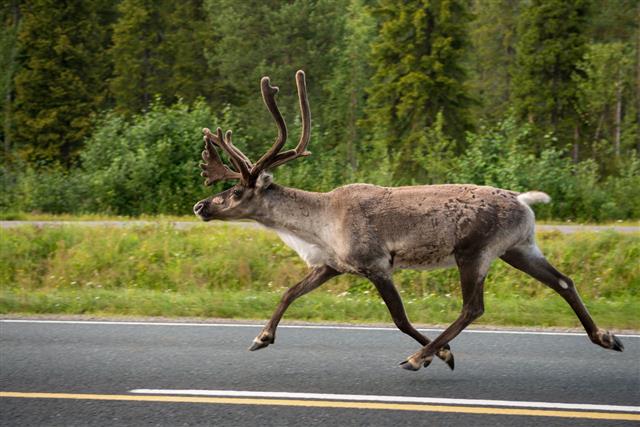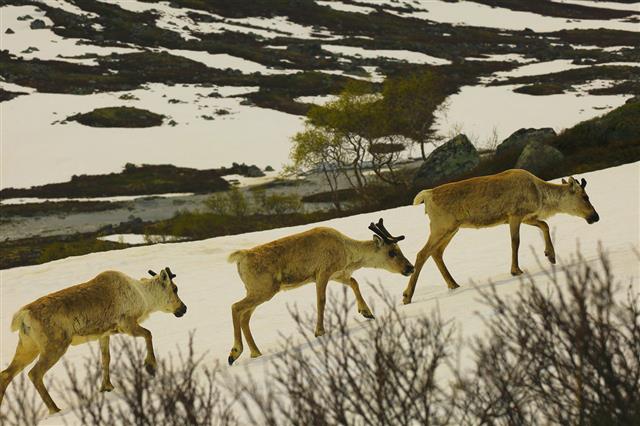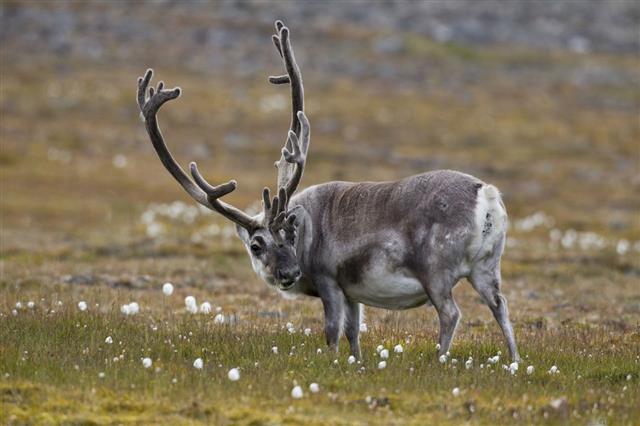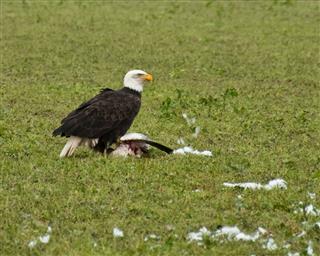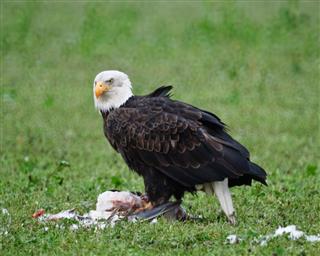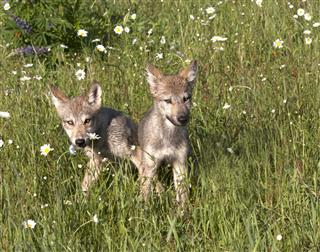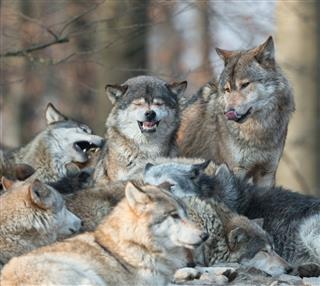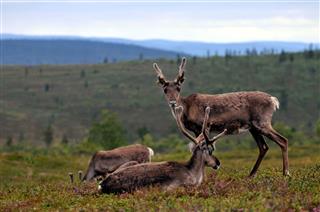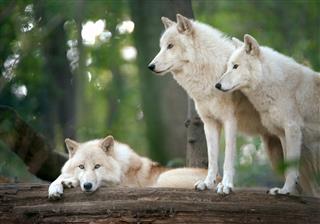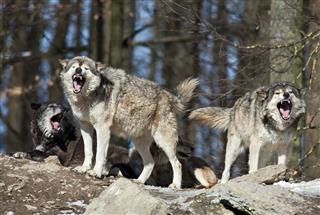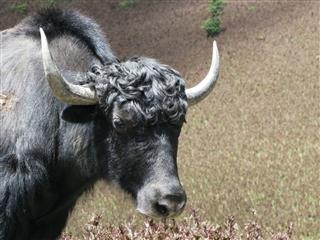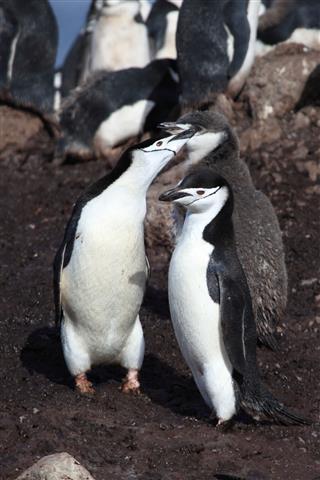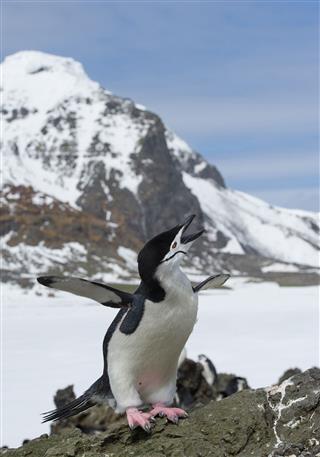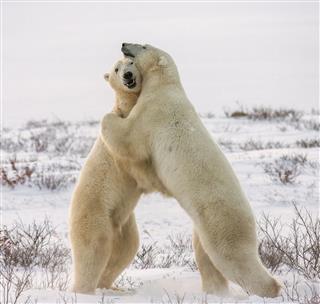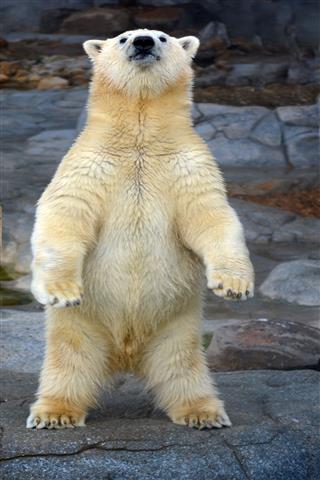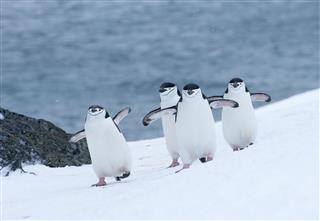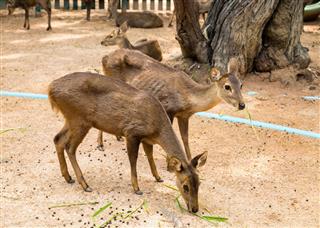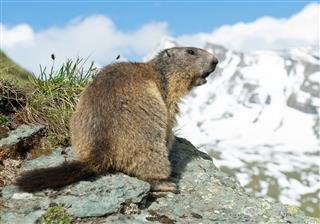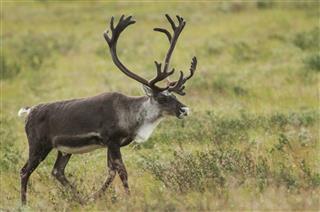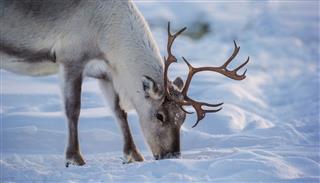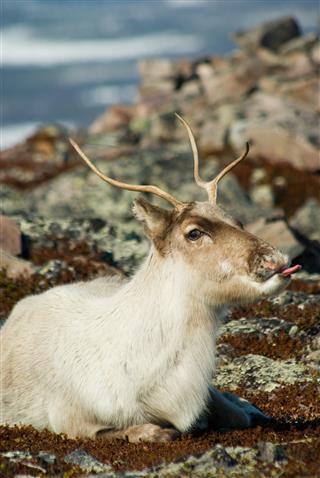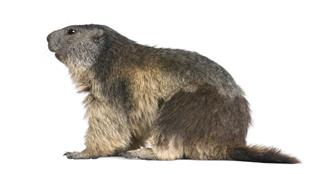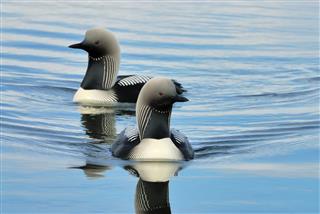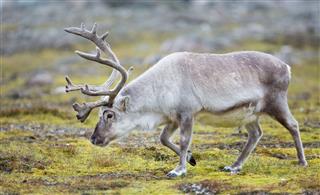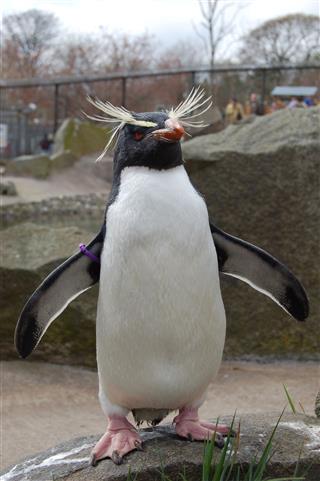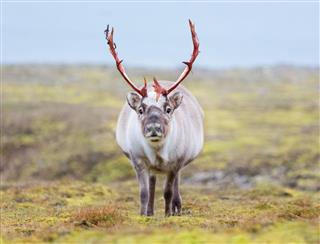
If you thought survival in the tundra was impossible, you will be surprised to see the list of animals found in this region. If these animals survive the harsh climate of the tundra biome, it is largely because of their exceptional adaptation skills.
What if …
Ever wondered what would have had happened had there been polar bears at the South Pole? It’s difficult to say for sure, but―in most likelihood―they would have driven penguins and seals to extinction, before dying of starvation themselves.
When we say tundra animals, the first few names to come to your mind are likely to be the Arctic fox, polar bear, caribou, Arctic hare, lemmings, etc. While those are undoubtedly the most popular animals in the tundra biome, there do exist other species which have adapted to the extreme conditions prevailing in this biome.
The tundra biome, which is typically characterized by freezing temperatures, low biotic diversity, lack of vegetation, and presence of permafrost, covers approximately a tenth of the total surface area of the Earth. It is divided into three types: the Arctic tundra, Antarctic tundra, and the Alpine tundra. Owing to its harsh climate, it is virtually impossible for humans to inhabit this biome. For animals, however, survival seems like an easy task, as they are equipped with some useful physical and behavioral adaptations.
Animals in the Tundra Biome
Arctic Tundra
Of the three divisions of tundra, the Arctic tundra happens to the most biodiverse. It is home to several species of lemmings, foxes, geese, and swans, as well as the subspecies of the gray wolf, brown bear, and caribou.
Arctic Tern
One of the most amazing species of bird found in the Arctic tundra is the Arctic tern (Sterna paradisaea). At 44,300 mi, it has the longest migration of any animal species. What makes the Arctic tern all the more interesting is the fact that it’s a trueblood tundra species, spending a part of the year in the Arctic tundra and a part in the Antarctic tundra.









Some Other Arctic Animals
- Alaska marmot (Marmota broweri)
- Alaskan hare (Lepus othus)
- Alaskan tundra wolf (Canis lupus tundrarum)
- Arctic fox (Alopex lagopus)
- Arctic ground squirrel (Urocitellus parryii)
- Arctic hare (Lepus arcticus)
- Arctic lemming (Dicrostonyx torquatus)
- Arctic loon (Gavia arctica)
- Arctic shrew (Sorex arcticus)
- Arctic wolf (Canis lupus tundrarum)
- Barnacle goose (Branta leucopsis)
- Beluga whale (Delphinapterus leucas)
- Brant goose (Branta bernicla)
- Brown bear (Ursus arctos)
- Canada goose (Branta canadensis)
- Caribou (Rangifer tarandus)
- Gray wolf (Canis lupus)
- Grizzly bear (Ursus arctos horribilis)
- Gyrfalcon (Falco rusticolus)
- Harlequin duck (Histrionicus histrionicus)
- Musk ox (Ovibos moschatus)
- Narwhal (Monodon monoceros)
- Polar bear (Ursus Maritimus)
- Red fox (Vulpes vulpes)
- Red Phalarope (Phalaropus fulicarius)
- Rock ptarmigan (Lagopus muta)
- Ruddy turnstone (Arenaria interpres)
- Snow goose (Chen caerulescens)
- Snowy owl (Bubo scandiacus)
- Stoat (Mustela erminea)
- Svalbard reindeer (Rangifer tarandus platyrhynchus)
- Tundra swan (Cygnus columbianus)
- Tundra vole (Microtus oeconomus)
- Tundra wolf (Canis lupus albus)
- Walrus (Odobenus rosmarus)
- White-tailed ptarmigan (Lagopus leucura)
Antarctic Tundra
When we think of penguins, we invariably envision the South Pole with all these flightless bird congregating on a vast field of ice. The fact, however, is that penguins are not restricted to Antarctica … or to the Southern Hemisphere for that matter. The Galapagos penguin (Spheniscus mendiculus) is found just to the north of the Equator. Nevertheless, of the eighteen species of penguins identified by BirdLife International, only six are found in Antarctica. In the coastal areas of the southernmost continent, these flightless birds have the company of six species of seals or pinnipeds.








Some Other Antartica Animals
- Adelie penguin (Pygoscelis adeliae)
- Antarctic fur seal (Arctocephalus gazella)
- Antarctic giant petrel (Macronectes giganteus)
- Antarctic krill (Euphausia superba)
- Chinstrap penguin (Pygoscelis antarctica)
- Crabeater seal (Lobodon carcinophaga)
- Eastern rockhopper penguin (Eudyptes filholi)
- Emperor penguin (Aptenodytes forsteri)
- Gentoo penguin (Pygoscelis papua)
- Imperial shag (Phalacrocorax atriceps)
- Leopard seal (Hydrurga leptonyx)
- Macaroni penguin (Eudyptes chrysolophus)
- Ross seal (Ommatophoca rossii)
- South polar skua (Stercorarius maccormicki)
- Southern elephant seal (Mirounga leonina)
- Weddell seal (Leptonychotes weddellii)
Alpine Tundra
The Apline tundra biome is found in the mountainous regions of the world, at an altitude of 11,000 ft and above. In these parts of the world, food scarcity prompts animals to migrate downhill in the search of food, and therefore, very few species are found here all year round. Those species which do live here throughout the year, hibernate for a considerable part of the year. Additionally, there are species like the Alpine pika, which, instead of hibernating, collect food and store it in rock crevices where they take shelter during winter.









Some Other Alpine Animals
- Alpine chough (Pyrrhocorax graculus)
- Alpine ibex (Capra ibex)
- Alpine marmot (Marmota marmota)
- Alpine pika (Ochotona alpina)
- Chamois (Rupicapra rupicapra)
- Elk (Cervus canadensis)
- Moose (Alces alces)
- Mountain goat (Oreamnos americanus)
- Short-tailed chinchilla (Chinchilla chinchilla)
- Snow leopard (Panthera uncia)
- Woodland caribou (Rangifer tarandus caribou)
- Yak (Bos grunniens)
Additionally, there are some species which are not just restricted to the Arctic, Antarctic, or the Alpine tundra. For instance, marine species, like the killer whales (Orcinus orca) and blue whale (Balaenoptera musculus), are found in the Arctic as well as Antarctic waters, which happen to be the breeding grounds for these species. Yet another example would be that of the wolverine (Gulo gulo), which is found in both, the Arctic tundra and Alpine tundra. Even the Arctic tern spends a part of the year in Antarctica.
Animal Adaptations in the Tundra Biome
Scarcity of food and the harsh climate may make survival in the tundra biome seem impossible, but the animals found here pull off this seemingly impossible task with ease. Like we said earlier, the credit for this goes to their superb adaptation skills. Some of the most prominent animal adaptations that tundra animals sport include the presence of thick fur and rich deposits of fat to help them survive the freezing cold, small ears to minimize heat loss, small bodies to ensure minimal exposure to frigid air, and broad feet to make it easier for them to walk on snow. Besides these physical adaptations, there also exist behavioral adaptations in the form of hibernation and migration. Several animals resort to hibernation during winter, when food availability poses the biggest problem. Others flock to warmer areas and return only in the summer.
While the list of tundra biome animals may not be as lengthy as that of the rainforest or grassland animals, the biome does have some of the best examples of symbiotic relationships on the planet to its credit. One of the best examples of the same is the commensal relationship between the Arctic fox and caribou, where the caribou digs the ground to feed on lichen, and in the process, brings to the surface insects and small mammals for the Arctic fox to feed on.
While there is very little direct interference by humans in the tundra biome, animals here do get affected by several environmental issues which can be traced to human activities. The global warming-induced melting of polar ice, for instance, has resulted in the habitat destruction for some species of the Arctic tundra, pushing them further north. Though none of the species face eminent threat of extinction, it won’t be long before they become vulnerable and eventually feature in the Red List of extinct animals compiled by the International Union for Conservation of Nature (IUCN).
